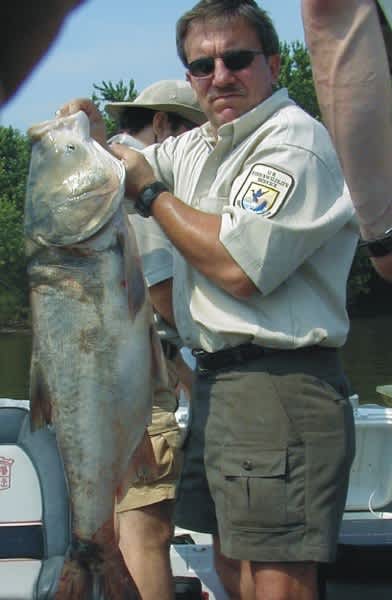Study: Asian Carp in Lake Erie May Have Little Effect on Sport Fish
OutdoorHub Reporters 08.11.14

When it comes to the Great Lakes, few threats are as feared as the establishment of an Asian carp population. After escaping into the Mississippi River in the late 1960s, Asian carp quickly colonized waterways across the United States and pushed out native species. Wildlife officials are understandably nervous as Asian carp draw ever closer to the world’s largest freshwater lake system—and a fishery that contributes more than $5 billion to the region. But will Asian carp mean the end of fishing in the Great Lakes? A recently published study in the journal Conservation Biology says maybe not.
“If bighead and silver carp were to establish in Lake Erie, local fish biomass is not likely to change beyond observations recorded in the last 3 decades,” reads a press release from Notre Dame University.
The study was conducted by a group of researchers from Notre Dame University, the US Forest Service, the University of Michigan, the National Oceanic and Atmospheric Administration, and Resources for the Future. Using expert opinions and judgments to estimate the impact of Asian carp in the lake, the study found that popular fish such as yellow perch and walleye should not be devastated by the arrival of the invasive species. Contrarily, experts surmise that perch and walleye populations may actually increase as a result.
“This study uses the knowledge of the foremost Great Lakes and Asian carp experts in the field to help us understand what the impact to Lake Erie fisheries biomass may be,” said David Lodge, director of the University of Notre Dame’s Environmental Change Initiative and one of the study’s co-authors.
However, researchers were quick to stress that the study only highlights the uncertainty of what an Asian carp invasion may entail. While experts believe that food in Lake Erie is plentiful enough to support both bighead and silver carp alongside native species, there are simply too many factors to say how destructive the carp could be. For instance, the study found that Lake Erie’s walleye population may decrease by as little as 10 percent in the wake of Asian carp becoming established in the lake, or as high as 40 percent.
“The range of possibilities concerning walleye biomass shows that the potential effect to this species is highly uncertain,” said another study co-author, Roger Cooke.
In fact, Asian carp may eventually edge out perch and walleye in total poundage, at over 25 metric tons per square kilometer.
“I would not suggest complacency, especially since the study didn’t deal with other potential damages such as the silver carp’s jumping behavior, which could negatively affect recreational boating,” Lodge told the Associated Press.
Late last year the US Geological Survey announced that grass carp, which are closely related to bighead and silver carp, were confirmed to be breeding in the Lake Erie Basin. Asian carp are also threatening to enter the Great Lakes from the Chicago Area Waterway System, and silver carp eDNA has been found in Sturgeon Bay. Officials are currently considering several proposals that are geared to stop Asian carp from entering the lakes, including an $18 billion plan to permanently separate the connections between the Great Lakes and the Mississippi River.

